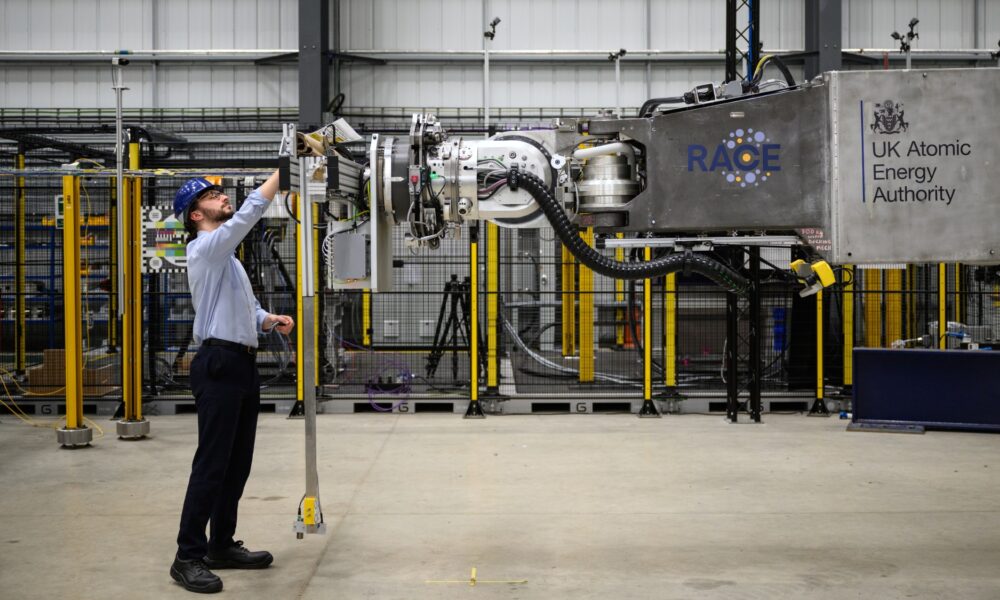Scientists are making significant strides towards achieving nuclear fusion, a process that holds the promise of providing virtually unlimited clean energy. The UK Atomic Energy Authority recently announced a major breakthrough in fusion energy research, revealing that researchers successfully stabilized the fusion process in a compact spherical tokamak for the first time. This achievement marks a crucial step forward in the quest to harness the same reaction that powers the sun.
Fusion differs fundamentally from nuclear fission, which generates energy by splitting heavy atoms. In contrast, fusion combines light atoms, typically hydrogen isotopes, under extreme conditions of heat and pressure. When these isotopes are heated to tens of millions of degrees, they form plasma—a superheated, electrically charged gas. As the nuclei of the atoms gain enough energy to overcome their natural repulsion, they fuse together, resulting in helium and releasing a substantial amount of energy in the process. This reaction mirrors the processes occurring in stars, including our sun.
The allure of fusion energy lies in its potential to provide a “virtually limitless, carbon-free source of energy,” as described by The Times. Nuclear physicist Annie Kritcher emphasized the importance of fusion, referring to it as the “holy grail of energy.” According to estimates from the Financial Times, a single glass of fusion fuel could power a home for more than 800 years. Unlike fission, fusion does not produce long-lived radioactive waste and eliminates the risk of catastrophic nuclear accidents, such as those experienced at Chernobyl. Bill Gates noted that understanding how to construct a fusion power plant could lead to an era of unlimited energy availability.
Despite its potential, recreating the conditions necessary for fusion on Earth poses formidable challenges. Stars naturally achieve fusion due to their immense gravity, which generates extreme pressure and heat. In contrast, achieving controlled fusion in a laboratory setting has proven to be one of the most complex and costly scientific endeavors. The first successful fusion was achieved by British scientists in 1934 using a particle accelerator, but commercial fusion remained elusive for decades, according to the International Atomic Energy Agency’s Bulletin magazine.
For fusion to occur, hydrogen isotopes must be heated to temperatures exceeding those of the sun’s surface, necessitating sophisticated containment methods such as powerful magnetic fields or laser pulses. The first fusion machine, known as a tokamak, was developed by Soviet physicists in the 1950s. This doughnut-shaped vacuum chamber employs strong magnets to heat and trap hydrogen plasma while allowing fusion to happen.
After nearly 70 years of research, a landmark breakthrough occurred in 2022 when scientists at the Lawrence Livermore National Laboratory in the United States achieved a reaction that released more energy than it consumed. Kritcher described this moment as a “Wright brothers’ moment” for fusion research, hinting at the potential for future advancements.
Looking ahead, the world’s largest fusion experiment, the International Thermonuclear Experimental Reactor, is currently underway in France. Funded by 33 countries, including China, Russia, and the United States, this project has faced multiple delays and is not expected to be operational until at least 2035. It’s important to note that this facility will primarily serve as a large-scale experimental platform rather than a source of electricity.
In contrast, the private sector is rapidly accelerating its efforts in the fusion race. Tech companies are investing heavily in fusion start-ups, driven by the increasing demand for energy to power data centres. A notable example is Commonwealth Fusion Systems, a U.S.-based start-up that aims to construct a nuclear fusion power plant operational by 2027. If successful, it could supply electricity to the grid by the early 2030s, marking a historical first.
In China, numerous private and state-backed enterprises are also competing to develop commercial fusion reactors, with ambitions to achieve operational status by 2035 or even sooner. Despite these aggressive timelines, experts suggest that widespread deployment of fusion power plants may not occur until the 2040s.
As the race for nuclear fusion continues, the potential rewards of harnessing this energy source could transform global energy landscapes, providing a sustainable solution to escalating energy demands and contributing to efforts to combat climate change.







